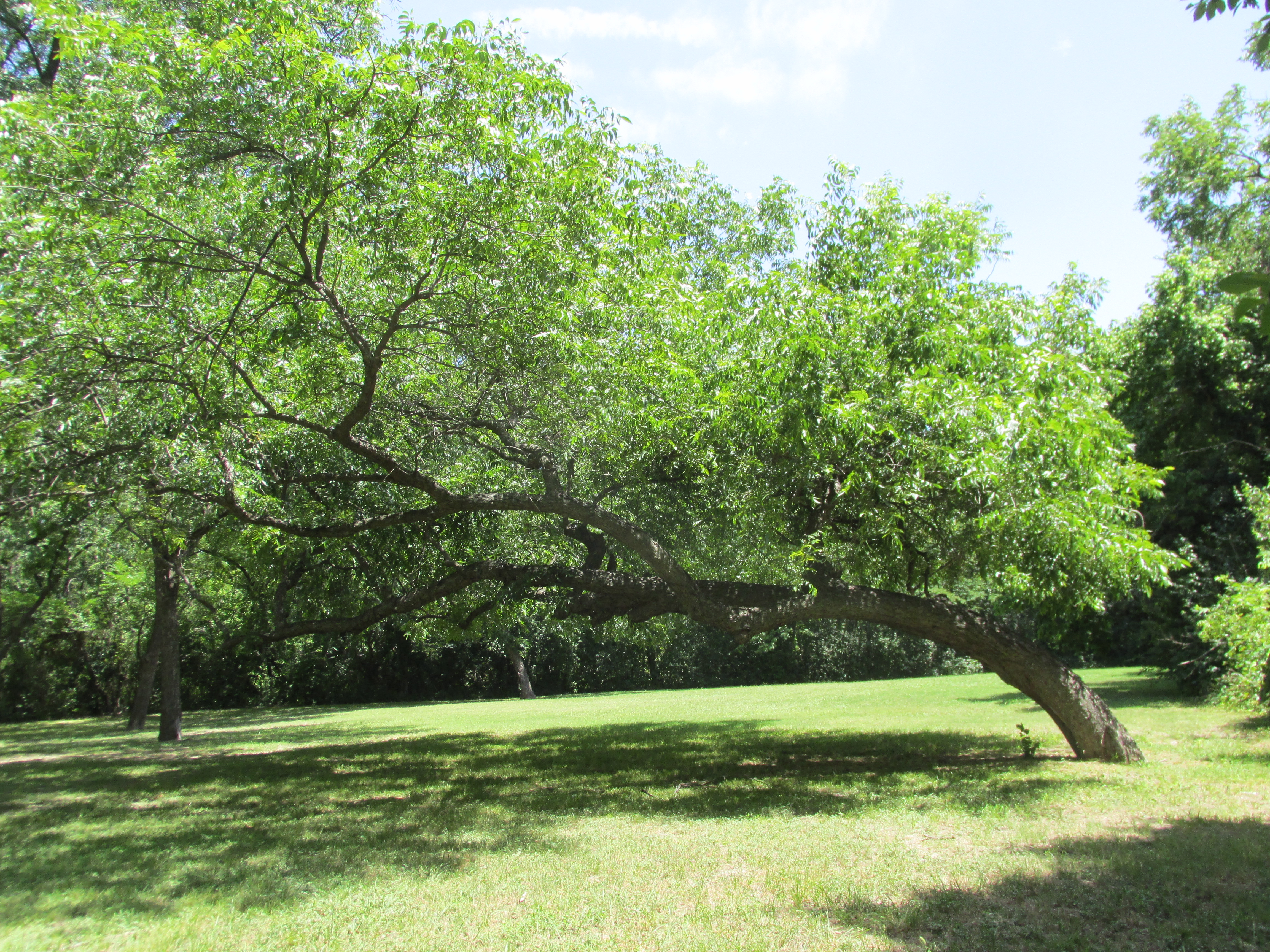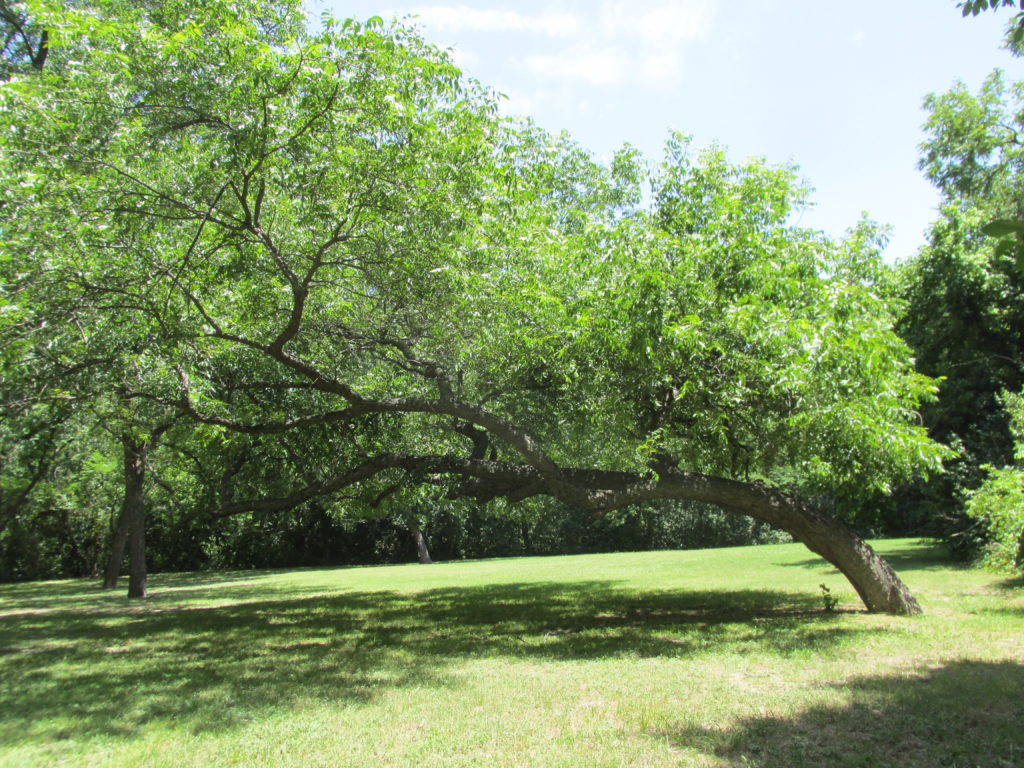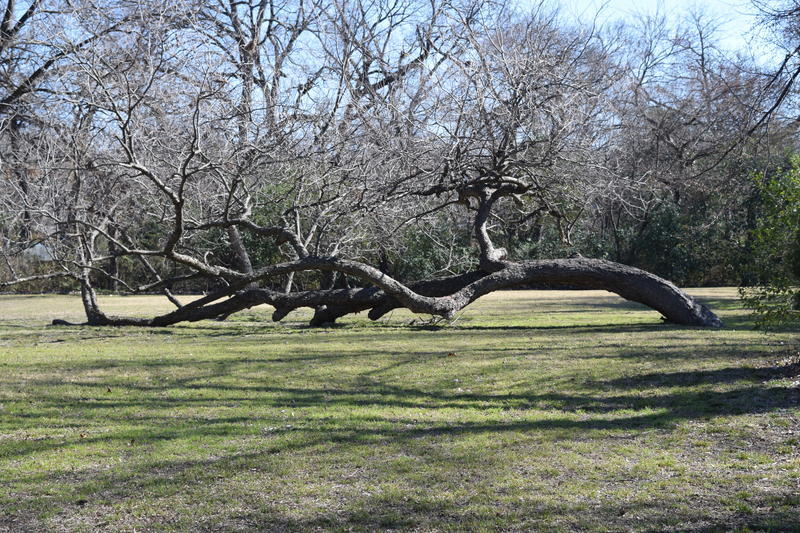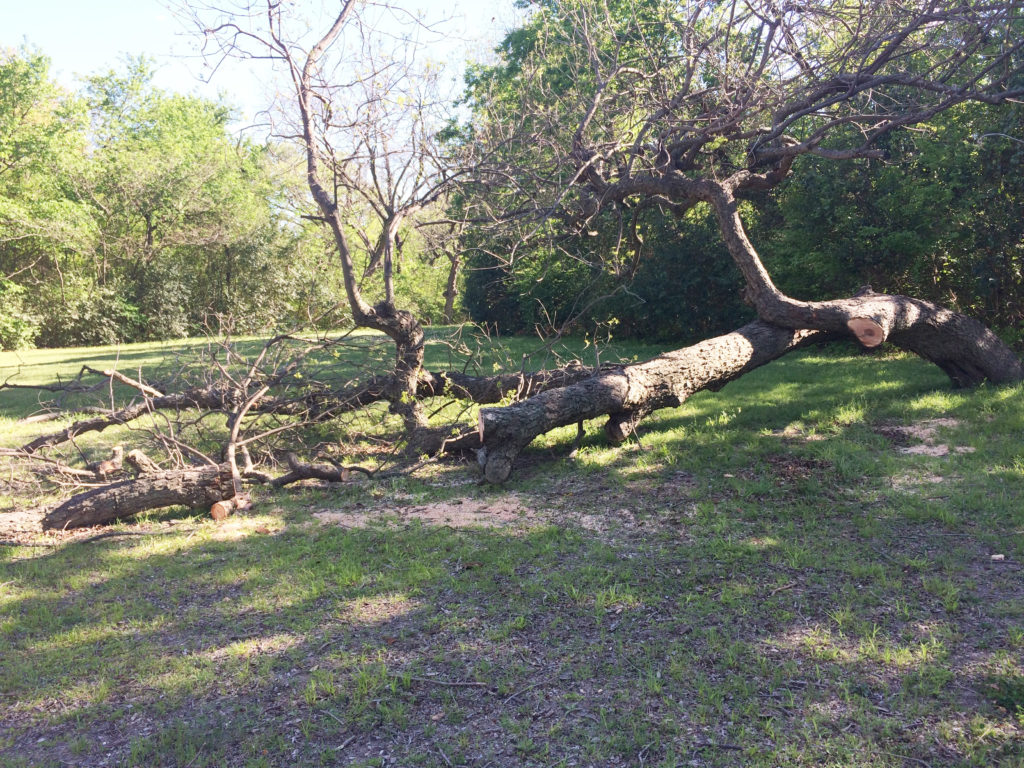
Arborists’ report on the Peavy landmark tree
by Amy Martin
Eastwood Riparian Committee
The landmark tree at Peavy and Lake Highlands, often referred to as the “Indian marker tree,” was visited by two of Dallas’ top arborists after being vandalized. The gist of their reports is:
- The tree lost around 50% of its canopy. Not much leafage left to support the rest of the tree. But it should be able to make it.
- The tree has been sinking steadily for the past several years. See photos below. It used to be a yard off the ground; now it rests upon the soil.
- This has cramped the vascular system of the tree, placing it under stress and curtailing its ability to circulate water and nutrients.
- It also has worsened the effect of the large chunk of missing bark and cambium at the tree’s base.
All this means that our tree has a sadly limited lifespan.
Current recommendations:
- Allow the cuts to seal naturally. (Sealant has not been recommended on trees for many years.)
- Water the tree during dry times for the rest of the year.
Fortunately, Eastwood Neighborhood Association’s entry garden across the street has a water spigot. However, our volunteers are tapped out with work on the Dixon Branch greenbelt.
So a volunteer crew will need to arise who can bring a heavy-duty hose to conduit the water across Peavy; we do not have a storage space for a hose at that location, unfortunately.
On other matters, discussions with the Dallas Parks & Recreation about use of the landmark tree’s cut wood are moving forward, albeit slowly. But should we be cleared to use the wood, exciting plans are afoot involving art, BBQ and the Bath House this fall.
Here are excerpts from their report.
Steve Houser of the Texas Historic Tree Commission www.txhtc.org, author of “Comanche Marker Trees of Texas”
- “Even though I had larger cuts to analyze yesterday than I had in 2014, I did not find it old enough to qualify as a Comanche Marker Tree. I know this will not please the neighborhood but growth rings are a direct reflection of its growth rate and its potential age. The potential age ranged from 85 years old up to 110 years old, based on the current growth ring research. A true Comanche Marker Tree must be at least 145 years old.”
- “It appears that 50%-60% of the foliage was removed, which reduces the trees ability to produce its own food by this percentage. Foliage produces food for the tree through photosynthesis with the sun. With up to 60% of the foliage missing, it is akin to cutting your diet by 60%. You might survive it…if you are healthy enough.”
- “There is a wound on the trunk of the tree near the base which reduces the amount of water and elements traveling up and down the trunk.”
- “The limbs were off the ground by 6 feet or so in 2014 but were laying on the ground in 2015. In essence, since the tree fell over further, roots on the side of the lean are now pinched and roots on the opposite side of the lean are stretched outward. It is not clear how this will affect the vascular system of the tree but we will know in the next few years.”
Karen Woodard, City Forester, Trinity Watershed Management
- “At this time any additions of fertilizer or pruning to ‘fix’ bad cuts made will further stress the tree. As we are heading into the heat of the summer, allowing the tree to compartmentalize the wounds and attempt to replace as much of the leaf loss as it can is critical. The most limiting factor will be available water, and as such we may need additional water be brought into the site during the summer months.”
Tree in 2014

Tree in 2016

Tree in spring 2017

Vandalized tree

2 thoughts on “Arborists’ report on the Peavy landmark tree”
Comments are closed.